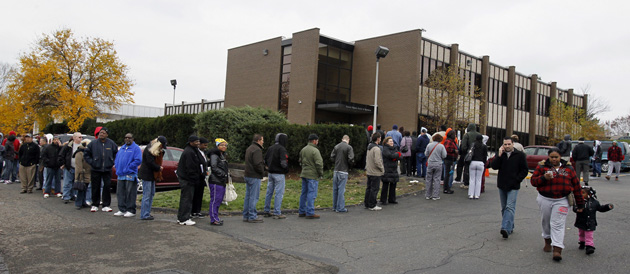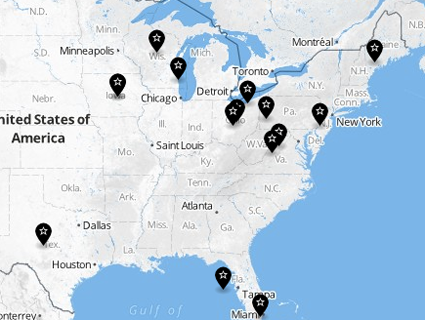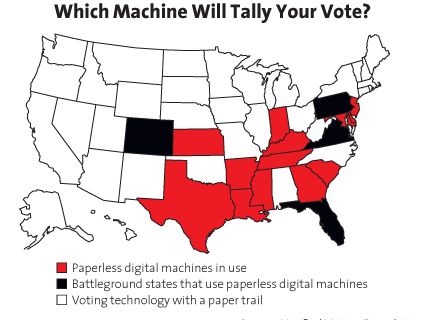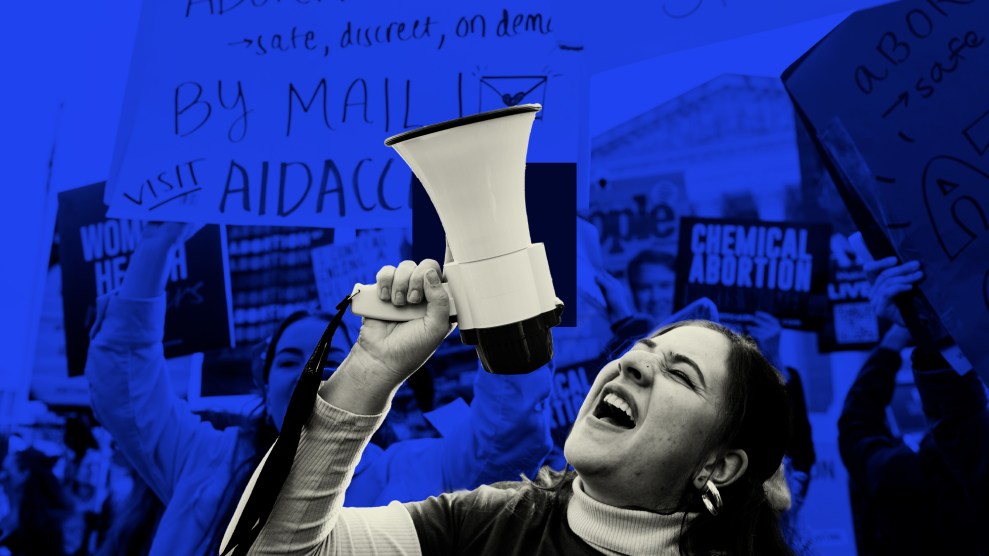
Long lines for early voting in Akron, Ohio yesterday. Paul Tople/MCT/ZUMAPRESS.com
At 6:40 this morning, when the Joy Park Community Center in Akron, Ohio, opened up to voters, as many as 150 people were already in line. Two observers told Mother Jones that the polling place opened 10 minutes late due to troubles with one of its optical scanners, which tallies votes.
The community center also had trouble with an audio device meant to assist hearing-impaired voters, according to Daniel Greenfield, an election observer volunteering for the Obama campaign. The machines were back up and running two to three hours later, he said. It’s unclear whether the troubles were caused by malfunctions or by poll workers not knowing how to operate the machines.
Either way, the hiccups didn’t help ease the frustrations of the voters facing waits of 60 to 90 minutes. An election observer who asked not to be identified told us that voters had complained about poll workers being disorganized and having disagreements “within earshot of people trying to concentrate on their ballots.”
The Joy Park Community Center is one of several polling stations in the Akron area that has experienced delays and voting-machine problems today. “We did have difficulty setting them up this morning throughout the county,” conceded Joseph P. Masich, director of the Board of Elections in Summit County, where Akron is located. Masich declined to address the machine malfunctions at Joy Park.
Greenfield said the delays were mainly due to a shortage of poll workers, not mechanical problems. Joy Park had three poll workers on site, handling anywhere between 25 to 150 voters in line. “What really is slowing things down is understaffed poll workers,” Greenfield said. “The Board of Supervisors just didn’t allocate enough. That may even be intentional.”
Some evidence suggests that long Election Day waits are more common in areas with large black populations—such as Akron, whose population was 32 percent in 2010. One MIT/CalTech survey found that blacks waited an average of 27 minutes to vote in 2008, more than twice as long as any other racial group.
Charles Stewart III, a MIT professor who coauthored the report, says the lines have less to do with race than with the difficulty of anticipating where long lines will form, and allocating staff and resources accordingly.
At the same time, Stewart acknowledges that black voters are more likely to vote in person than absentee, and are more likely than whites to vote early. This might help explain the large early turnout at Joy Park. “Once the line forms, the election official is often too hamstrung to do anything about it,” Stewart said.
















